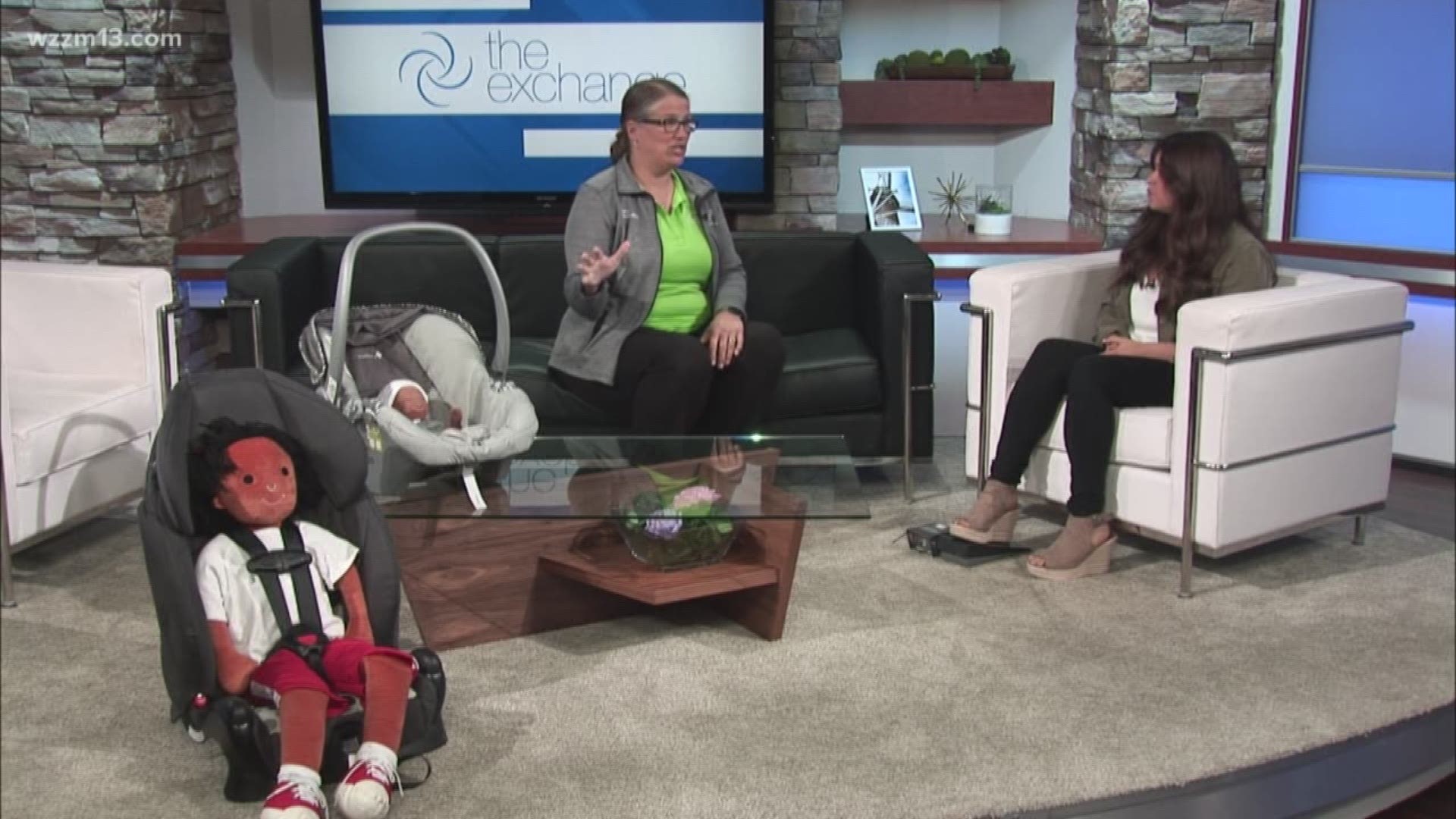GRAND RAPIDS, Mich. — Car seats reduce the chance of injury and death by nearly 70, but only if your child is in the correct seat, and the seat is properly installed.
The Helen DeVos Children’s Hospital Injury Prevention Program is committed to educating families on ways to stay safe through the Meijer Birth to Booster Program, which focuses on:
- Educating families on traveling safely with children, from newborn to 14 years old
- Improving proper car seat and booster seat use
- Providing families in need with reduced-cost car seats and booster seats
The different types of car seats your child should be seated differ between ages and height. Below is the stages of which car seat would be better suited for your child.
Stage One: Birth to Approximately Two Years
- Children are best protected riding in a rear-facing car seat as long as possible. Most convertible seats accommodate rear-facing children up to 40 pounds or more.
- Keep baby rear-facing up to the maximum limits of the convertible car seat.
Stage Two: Approximately Two to Five Years
- Most car seat harnesses have high weight limits. Check the label on the seat.
- When using a forward-facing seat, be sure to: Use the forward-facing seat belt path. Switch the recline adjuster to the upright position (if using a convertible seat). Use the tether when available.
Stage Three: Recommended Five Years and 50 Pounds, 4'9"
- Booster seats help protect children by lifting them so the lap and shoulder seat belt connects with their strong bones.
- Use the shoulder belt adjuster if the belt touches the child’s neck. It should cross the collarbone and not touch the neck or the shoulder.
Stage Four: Minimum 4'9"
Your child is ready for the lap and shoulder seat belt if you can answer “yes” to each of the following questions:
- Is your child 4'9"?
- Does the lap belt sit low across the upper thighs?
- Does the shoulder belt lie across the collarbone—not touching the neck and not off the shoulder?
- When the child’s bottom is scooted all the way back against the seat, do his or her knees bend at the edge of the seat?
- Can the child stay seated that way the entire trip?
Helen DeVos Children’s Hospital Injury Prevention Program offers free car seat inspections at various locations in the area by nationally certified technicians. Visit helendevoschildrens.org/injuryprevention for dates, times and locations.
If you're in greater Grand Rapids-area, you can call 616-391-7233 for more information. If you're in the Laskeshore-area, you can call 616-748-2285.
Helen DeVos Children’s Hospital is not responsible for approving any installation method and will not be held liable for injury or death that may occur from improper installation of the child restraint.
►Make it easy to keep up to date with more stories like this. Download the 13 ON YOUR SIDE app now.
If you would like more information about advertising with 13 ON YOUR SIDE, please contact Jeff Olsen at jolsen@wzzm13.com.

